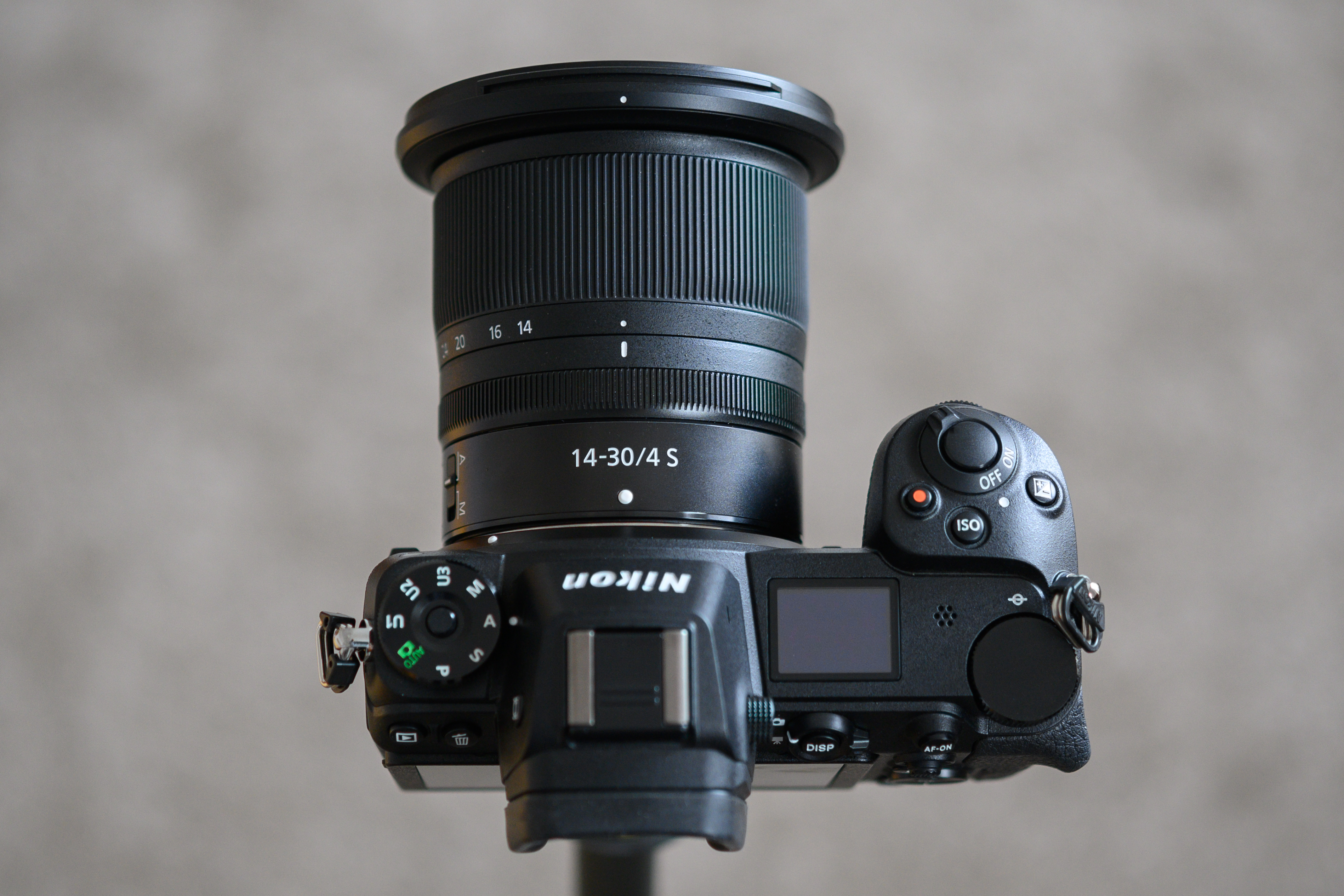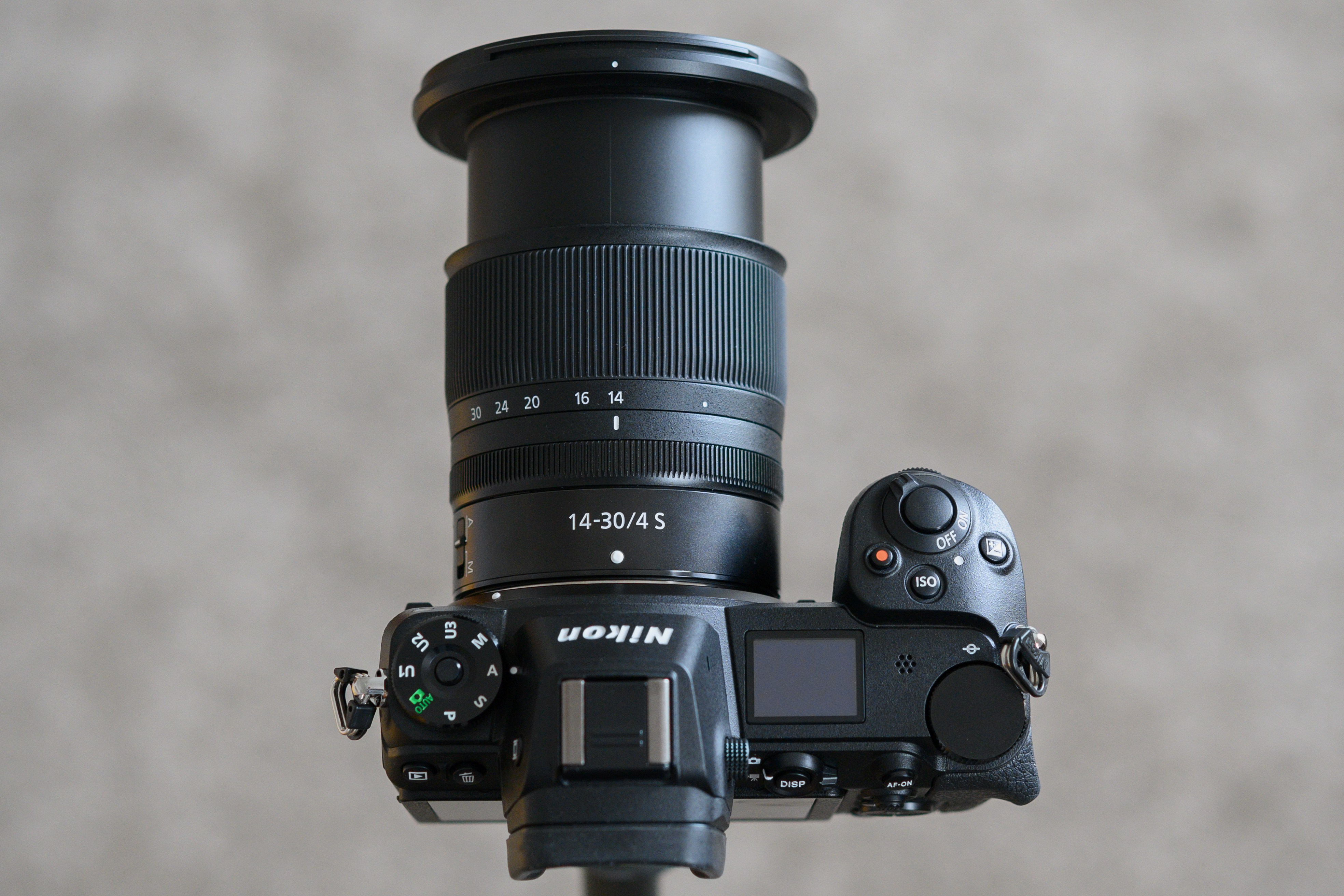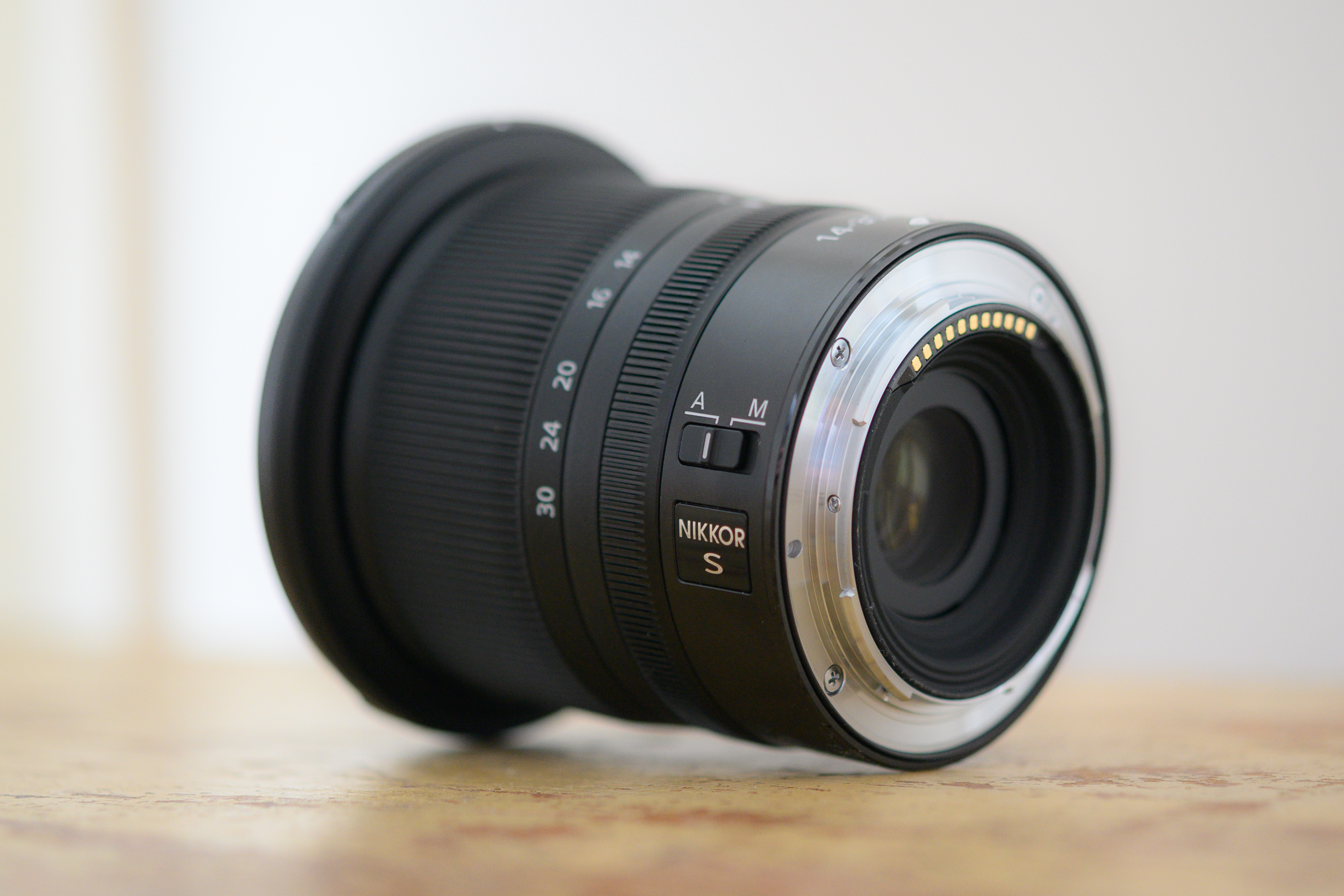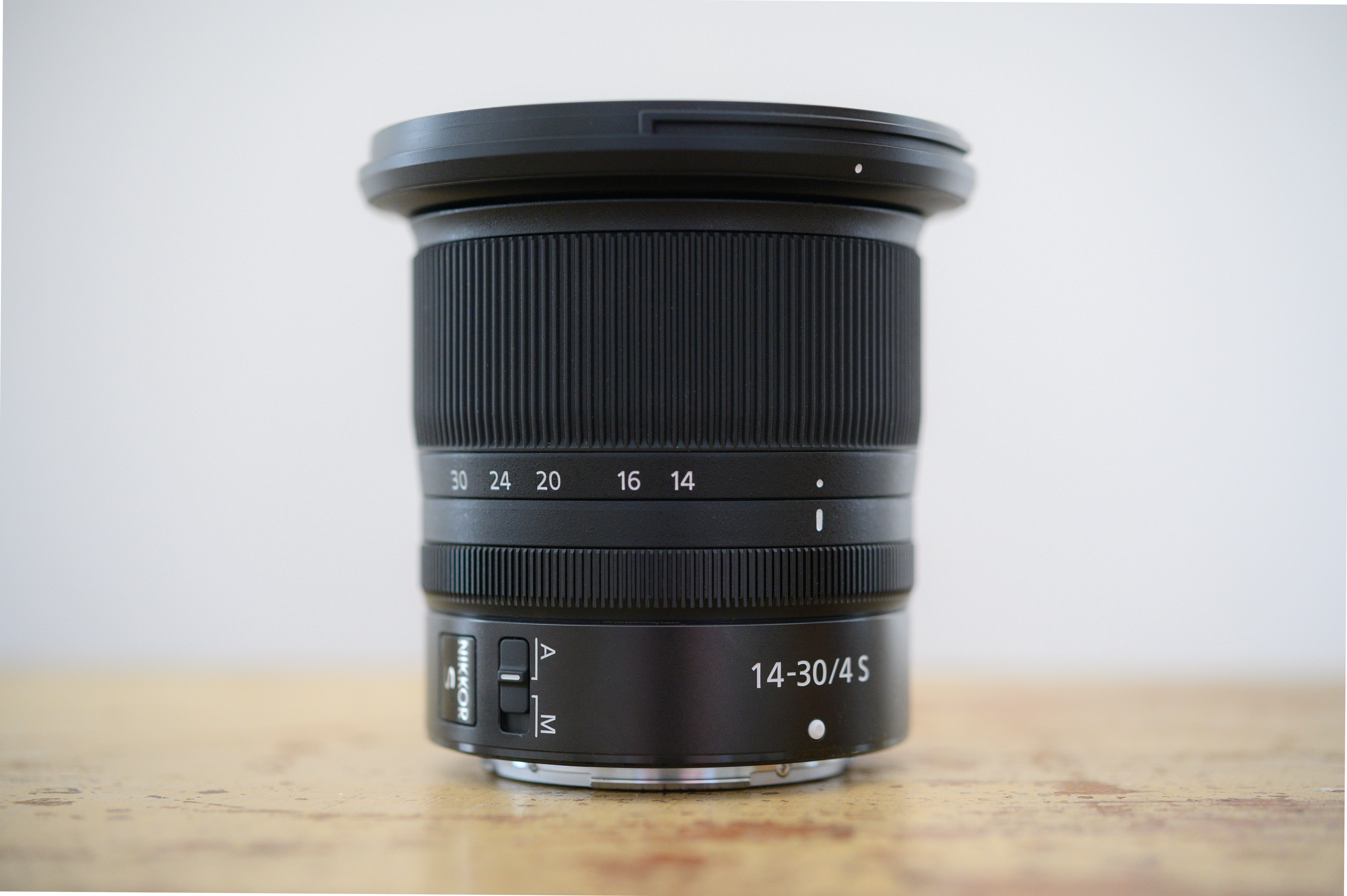TechRadar Verdict
Great image quality, practically silent autofocus and a relatively compact design make this a winning option for Z-series users. The f/4 maximum aperture may rule it out for some, but a fine balance has been struck for those who need something as powerful as it is practical.
Pros
- +
Very compact considering its focal range
- +
AF is practically silent
- +
Built-in corrections banish distortions effectively
- +
Flat front element easy to clean
Cons
- -
Collapsible barrel not always ideal
- -
Slightly soft corners wide-open at 14mm
- -
Not possible to click declicked Control Ring
- -
Not cheap for an f/4 lens
Why you can trust TechRadar
A big challenge for camera makers launching any new mirrorless system is having enough lenses to tempt people to adopt it. Developing a full range of optics takes time and a lot of investment, and it's a process that a number of manufacturers are currently engaged in.
Like Canon, Nikon has made it as easy as possible for early adopters of its latest Z6 and Z7 models to use existing lenses designed for SLR and DSLR bodies through an adapter, but part of the appeal of the new line is that it arrives with new lenses, ones that exploit the physical and technological advantages of the new system. And now that the line has welcomed a few standard optics to kick things off, it's time to expand the range to include slightly more exotic options.
The NIKKOR 14-30mm f/4 S is one of the first of these, being the widest optic in the series so far. Wide-angle zoom lenses like this, designed for full-frame sensors, can be heavy and beefy, particularly when they boast a constant maximum aperture. But Nikon has managed to balance a modest maximum f/4 aperture with a collapsible lens design, making the Z 14-30mm f/4 S far more compact than one might expect. So, is its performance as impressive?
Features
- Constant f/4 aperture
- "Virtually silent" AF system
- Nano Crystal Coat technology
The NIKKOR Z 14-30mm f/4 S has been designed with 14 elements in 12 groups. Among these are four ED elements to control chromatic aberration, and another four with an aspherical design to handle spherical aberration and distortion, among other things.
Nano Crystal Coat technology, which was used widely on the company's F-mount optics before the Z system was born, has also been employed here, with the aim of passing as much light though to the sensor, in turn banishing reflections and reducing the likelihood of flare and ghosting.
Only seven aperture blades make up the diaphragm, which may seem low by today's standards, but then this isn't really a lens targeted at the kinds of applications where perfectly round bokeh is critical – although Nikon does claim that it produces nicely rounded results.
Focal length: 14-30mm
Mount: Nikon Z
Filter size: 82mm
Max aperture: f/4
Maximum magnification: 0.16x
Dimensions: 89 x 85mm
Weight: 485g
The focusing system is internal, which means the lens doesn't change in length as focus is adjusted, and you can shoot from as close as 28cm away from the subject, regardless of where you are in the focal range. Focusing itself is handled by a stepping motor, while a floating element has also been included to keep focusing more precise when shooting up close.
Sign up for breaking news, reviews, opinion, top tech deals, and more.
Nikon also stresses the AF system's silent operation and reduced focus breathing, which should make it appeal more to video shooters. That same audience will also no doubt be pleased to learn that the control ring, which is happy enough adjusting manual focus but can customized to perform other functions, is de-clicked for seamless turning – more on this shortly.
Build quality and handling
- Dust- and moisture-resistant barrel
- Collapsible design
- Relatively flat front element
Many wide-angle lenses along the lines of the NIKKOR Z 14-30mm f/4 S have lens hoods built into them, partly because of their propensity to lens flare, but also because many have bulbous front elements that can be easily damaged without some kind of permanent protection.
This latter point rules them out for use with conventional front-mounted filters, which bothers some photographers – but the 14-30mm f/4 S is different. A more streamlined design and a flatter front element make it far more practical in use, and allows 82mm filters to be threaded on the front as they can be on many other lenses. Indeed, Nikon is proud to point out that this is the world’s first wide-angle zoom lens with a focal length from 14mm that can have filters mounted.
The retractable design (below) means the lens needs to be extended from its stowed position before you can start shooting, which may grate a little. It's not critical that it's stowed between uses, but the fact that it becomes so much more portable means you're likely to do this.

Stowed

14mm

30mm
The Z 14-30mm f/4 S longest at its 14mm position, and shortens as you zoom towards 30mm. There's good definition between the 14mm point and the stowed position, which makes it more difficult (though not impossible) to overshoot the 14mm point when zooming the lens out from a longer focal length, and markings for 16mm, 20mm and 24mm focal lengths are etched in between the two extremes.
There's not a great deal to the lens in terms of external controls, but then it's hard to think of anything that's missing. We don't expect a focus-limit switch on such a lens, for example, while image stabilization is handled at the sensor level, so no control for this is required. Control is limited to an AF/MF switch, a fine-toothed rubber zoom ring, and the knurled control ring just behind it that can be used to adjust focus, aperture and so on.

Image credit: TechRadar

Image credit: TechRadar

Image credit: TechRadar
The control ring is de-clicked, which is great if you plan on using the NIKKOR Z 14-30mm f/4 S during video recording, as sounds from its operation aren't picked up on footage. Then again, those planning on primarily using this lens for stills may have preferred the ring to be clicked, or to have the option to switch between clicked and de-clicked, as some lenses provide, as it's quite sensitive and provides no feedback when turned.
The lens has a dust- and moisture-resistant construction, together with a fluorine coat on the front element to keep this clean, and it certainly feels very well put together. The mount is metal, as is the rear of the lens barrel, while the zoom ring has a slight bulbous design that makes it easier to grip. The large front of the lens means a camera sits at a very slight incline when placed down on a surface.
Performance
- Autofocus is practically silent
- Consistent sharpness
- Built-in profile corrects pronounced distortion
Nikon says the autofocus system in the Z 14-30mm f/4 S is virtually silent, and the claim is pretty well justified. Sure, you can hear the lens's autofocus motor whirring a little if you put your ear right next to it, but this sound is easily masked by even gentle ambient noise. Given the inclusion of silent shutter options on both the Z6 and Z7, this makes the lens pretty much perfect for more candid shooting.
At the 14mm end, slight softness can be seen at f/4, although this noticeably improves once you close the aperture to f/4.5, and certainly once you get into the mid-range apertures images look nice and consistent. Sharpness is still good at the 30mm end, and consistent at smaller apertures, although not quite as bitingly sharp as we might want from a lens with this kind of price tag.
Overall, the lens appears to be optimized a little more for the 14mm end than the 30mm end, which makes sense. Of course, in real-world conditions, whether you use a Z6 or a Z7 makes a difference here; those using the former are likely to find great results across the board.

Click here for the full-size image

Click here for the full-size image

Click here for the full-size image

Click here for the full-size image

Click here for the full-size image

Click here for the full-size image
Opening up the raw files from the Nikon Z7 on which we tested the Z 14-30mm f/4 S in Adobe Camera Raw showed that a profile had already been applied to correct distortion and lateral chromatic aberration, so you shouldn't be troubled by either of these if the program you use supports such profiles (and that's most people).
Opening up the same files in a program that doesn't automatically apply these profiles shows there to be pronounced barrel distortion at the 14mm end and noticeable pincushion distortion at the 30mm end, together with moderate lateral chromatic aberration at the 14mm end. Is this a problem? Not particularly; better optical correction would no doubt be more costly, not to mention result in a larger and/or heavier lens.
There's a moderate amount of vignetting at f/4 when at the 30mm end, although the majority of this lifts once you get to f/5. Perhaps predictably, it's a little more obvious and stubborn at the wide-angle end, taking until around f/6.3 to mostly disappear; both Z-series bodies include the option to correct this.
Verdict
The NIKKOR Z 14-30mm f/4 S is a very capable addition to the S line, and one that will no doubt please those needing to get lots into the frame, and who are used to lugging around heavier alternatives.
With its compact build, great finish, light weight, and swift and virtually silent autofocus system, it’s a lovely lens to handle and operate. The flat front is a huge bonus for landscape users, and while the retractable barrel won’t be to everyone’s taste, it’s a small price to pay for what you gain in portability.
Being picky, the de-clicked control ring might not please some, and the lens isn't completely free from aberrations, although the ones it's most prone to are the type that can be (and are) successfully rectified though profiles designed into raw files (or camera-based corrections).
Optically it might not be quite as impressive as some other lenses in the line so far, such as the Z 50mm f/1.8 S and the excellent Z 24–70mm f/2.8 S, but there's a delicate balancing act to be achieved here, and many will no doubt be happy with the result.
Perhaps the only real major sticking point is price – a four-figure price tag for a lens with an f/4 maximum aperture stings. The reality is that many will no doubt want to use the lens at smaller apertures for the deep depth of field their subjects require; and with the sensor-based stabilization inside current Z bodies, those looking to shoot handheld may not really need a wider aperture anyway – and if they do, Nikon's forthcoming 14-24mm f/2.8 S will present another option.
